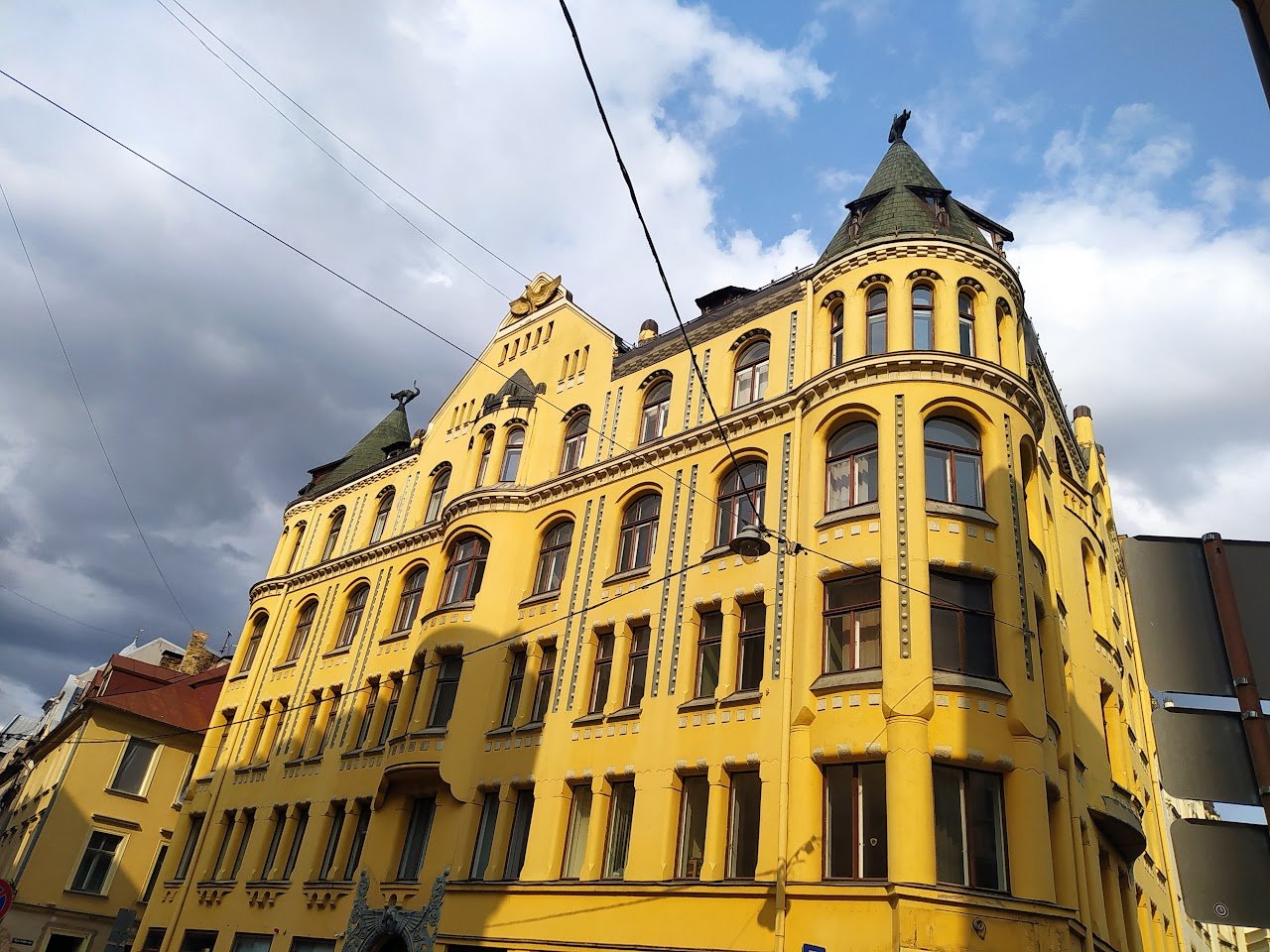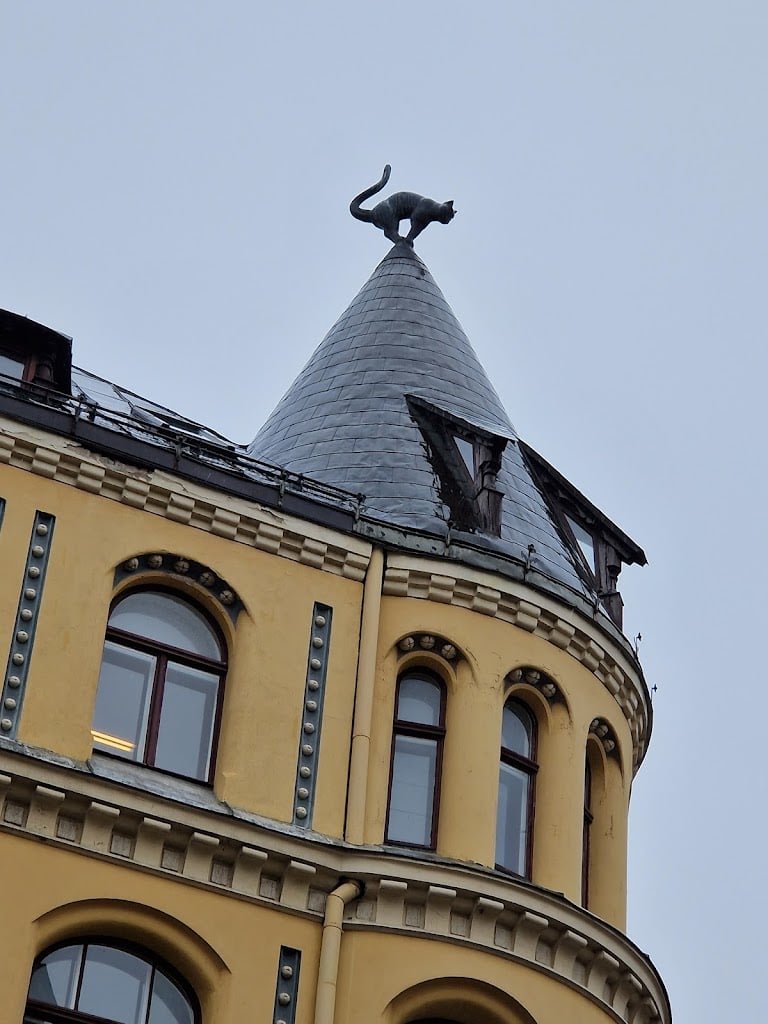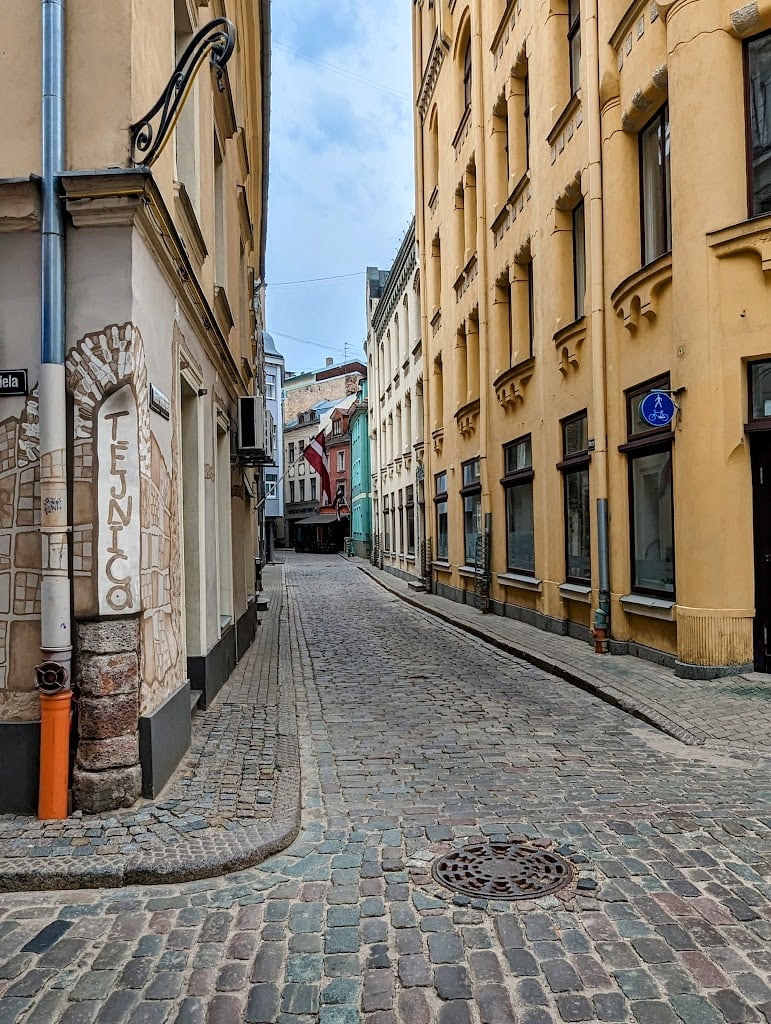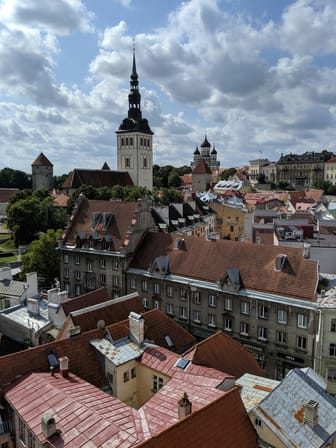Cat House



Ask ThatchGPT
Suggest a local expert to plan my trip
Suggest an unique itinerary for my Latvia trip
What foods do Latvia locals eat
What are some true hidden gems in Latvia
Help me brainstorm trip ideas for Latvia
Help me plan a family-friendly trip to Latvia
What people say
Pedro Pereira
Available for hire
"The Cat House's origins can be traced back to 1909, when Latvian architect Friedrich Scheffel was commissioned to design a new apartment building for a wealthy merchant named Bertolds Volz. Volz, a self-made man, had been denied membership in the prestigious Great Guild, a fraternity of German merchants that dominated Riga's business scene. Stung by this rejection, Volz sought a way to subtly express his displeasure.
Scheffel, inspired by Volz's story, incorporated a mischievous touch into the building's design. Atop the two turrets that flanked the entrance, he placed sculptures of black cats, their arched backs and raised tails pointed directly towards the Great Guild Hall, located just across the square. This feline gesture was widely interpreted as a symbolic insult, with the cats' tails resembling a rude hand gesture.
The placement of the cat sculptures sparked outrage among members of the Great Guild, who considered it an affront to their dignity. They demanded that the cats be removed, but Volz refused, leading to a legal dispute. The case eventually reached the city council, which ruled in Volz's favor, on the condition that the cats be turned around to face the opposite direction.
Despite this compromise, the Cat House remained a symbol of defiance and rebellion, capturing the imagination of Riga's residents. Over time, the cats became beloved figures, their mischievous charm adding to the building's unique character. The Cat House gradually evolved into a popular tourist attraction, a testament to the power of art and architecture to spark conversation and challenge societal norms.
Beyond its intriguing history, the Cat House is also a remarkable example of Art Nouveau architecture, a style that flourished in Riga during the late 19th and early 20th centuries. The building's facade is adorned with intricate ironwork, floral motifs, and stylized geometric patterns, showcasing the intricate craftsmanship and artistic flair of the era.
The interior of the Cat House is equally impressive, featuring spacious apartments with high ceilings, ornate plasterwork, and stained-glass windows. These details provide a glimpse into the lives of Riga's upper class during the early 20th century, offering a tangible connection to the city's past."
Tom Isbister
Available for hire
"Built in 1909, this medieval-inspired building is known for its 2 cat sculptures on roof turrets."
Mentioned in these guides
About Cat House
Get the inside scoop on Cat House from local experts, travel creators, and tastemakers. Browse genuine trip notes, Cat House reviews, photos, travel guides, and itineraries from real travelers and plan your trip with confidence.
Save this spot for later or start mapping out a new trip today
Try our AI Travel Assistant and get instant answers to any questions about your trip.
Ask ThatchGPT

